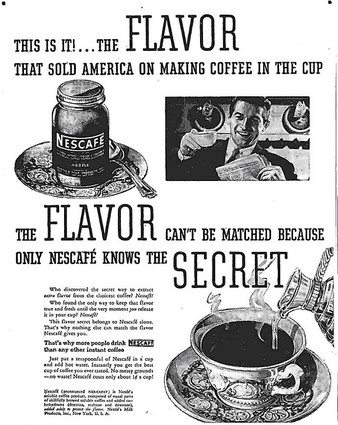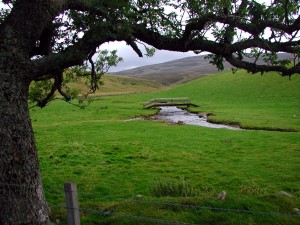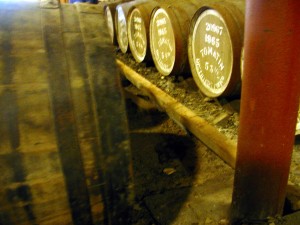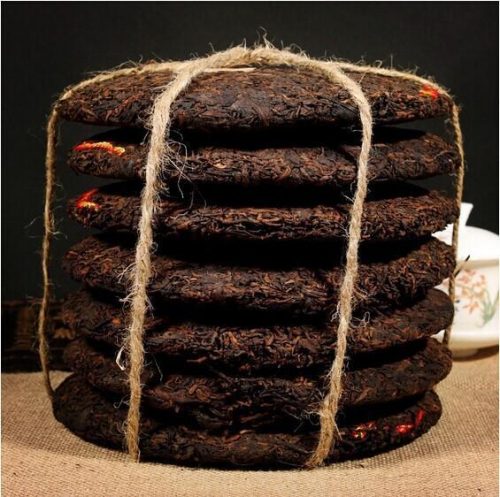 Once upon a time as a student I wandered the empty, dark and wet streets of London in search of coffee. No place seemed to serve the stuff I had become accustomed to in America. How was I expected to work through the night without a pot of hot black coffee? A lonley Dunkin Donuts near the corner of Kingsway and High Holborn became my solace.
Once upon a time as a student I wandered the empty, dark and wet streets of London in search of coffee. No place seemed to serve the stuff I had become accustomed to in America. How was I expected to work through the night without a pot of hot black coffee? A lonley Dunkin Donuts near the corner of Kingsway and High Holborn became my solace.
I was living in a city of half-empty jars of instant coffee powder and nothing better. Pub and restaurant staff would give me a look of confusion after I would order coffee but then protest “That’s not what I meant. That’s not coffee.” Their response? “So do you want tea then?” No. I didn’t want tea. Thank you Dunkin Donuts for keeping a pot of hot black coffee on for me. Sorry I never ate the donuts.
Perhaps the problem was one of marketing. Nescafe was an influential voice for so long (since 1938 — per the ad above) that by 1993 the UK still was under the impression that Americans stirred a spoonful of flavored sawdust into a cup of hot water…and why would anyone want to drink that rubbish when they could take tea, scotch or beer? I told native Londoners about my quest for coffee but they just snickered and said “I s’pose you also want peanut-butter, a shower and a burrito? Haha!”
A few years after I navigated the troubled waters of coffee in London I headed north to explore throughout the highlands of Scotland; sampling scotch to study the ingredients, methods of distillation and general history.


This awoke my fascination with whiskey and small-batch bourbons back in America. I found it curious how Jim Beam had created in the late 1980s four low-cost brands of single-barrel bourbon that were far less expensive than the mainstream brands but of better quality. Things were going smoothly until I witnessed a big change. Prices sky-rocketed in America as quality diminished or was made constant. The price for Knob Creek doubled from $16 to $32 in just two or three years. The need to understand process and ingredients (e.g. the search for a particular bean and roaster, the hunt for a single-barrel or for a particular bottler) lost meaning and value.
It became a question of just which giant conglomerate was running brands and for what margin (Bush Pilot was forced out of production by American lawyers, Lagavulin reduced production and sold to Diageo*, and Laphroig was acquired. As far as I can tell there is now only one independent distillery in Scotland. Oh, and Starbucks were popping up all over London). The challenge to learning about roasters or distilleries and their details…gone. Consistent mediocrity replaced the risk of dealing with inferior and superior quality. It was like the scene in Kubrick’s 2001 when all food and drink is reduced to baby-formula, even for adults.
Meanwhile, during the fall and decline of interest in other beverages, I was repeatedly exposed to tea. I mean I always had been interested in the odd tea, especially some of the stranger herbal collections from Minnesota and Colorado like Morning Thunder Barley and Good Earth, but I soon realized it was undervalued, open to innovation and incredibly complex. By 2007 I found myself exploring it like never before and paying more attention to the risks and rewards of discovery.
Along came Pu-erh
After many many days wandering through tea shops it seemed to me that I was using the same taste filters for tea that I had for coffee and whiskey; I was finding full-bodied smokey or woody flavors with a touch of bitter and a sweet aftertaste.
One day I stumbled upon the fact that a post-fermented tea from the Yunnan province in China, called Pu-erh, fit the profile more than perfectly. Not only can it replace coffee in taste and effect, it blows away any residual fondness I had for coffee culture (with the exception of drinking Bedouin hot coffee under the noon-day sun in the desert):
One cup of coffee for the guest, one for enjoyment and one for the sword
In short, Pu-erh provides the procedures and smooth mental stimulant effects without any of the side-effects of coffee.
Further research has really opened my eyes to a deep sea of details. While coffee and whiskey had a few things to ponder, ancient Chinese tea goes to an absurdly further level. It’s beyond even ancient beer and wine. Here are some of my notes so far:
- Pu-erh is named for a town where it could be bought. It actually comes from a range of mountains in south China Xishuangbanna Autonomous Prefecture that have a particular soil and humidity. An ethnic group (the Dai) was growing tea there in at least the Bronze age (3000 years have passed since cultivation and trade by the Shang Dynasty) using fermentation and adding spices and milks to their drinks (versus young and green tea favored elsewhere). Tea trees planted nearly 1,000 years ago may still be found.
- Horse caravans formed a tea route with five directions and brought Pu-erh into China and eventually other countries. Here’s a map from Hou De Asian Art

Because of the long journey the tea leaves were compressed with hot steam into cakes. The cake looks something like a giant coin and is very stable for transportation and trade. By the 1300s Pu-erh tea was one of the most important commodities in the Chinese market and by the 1600s it had become a well-known and popular tea througout China. Tibetan butter tea is made from Pu-erh, for example. China interest rose quickly again in 2007 and investors drove up prices, which prompted tea fraud (fake cake). Risk settled down in 2008 as Chinese regulators imposed rules of origin and quality. - The fermentation process on the tea leaves makes Pu-erh unique. Microbes cause it to darken to a reddish hue and make different flavor profiles. The value of the tea therefore can increase over time. Environmental factors can lead to flavors such as peaty, musky, earthy, fruity, grassy and of course smooth (like soy milk). The time from when the tea was picked in the mountains until it was delivered by horse to the market is said to be related to how the tea looks and tastes. The size and appearance of a tea cake can make it valuable yet it also is related to fraud (hard to tell what’s inside a cake without testing it).
- The 1970s created a split in quality. Sheng Pu-erh involves the traditional process, which is not oxidized and can be stored/aged for decades before prepared to drink. The tea absorbs its environment so wherever the tea is kept can be important to the value and taste. Sheng style is often 20 or even 30 years old. Shou Pu-erh was developed in the 1970s using oxidization to accelerate the aging process so it could be used after just a couple years.
How to buy Pu-erh today
That’s just a tiny snapshot of the huge amount of background information that has formed over many centuries. I don’t recommend skipping it or ignoring it as it impacts the final step in selecting a Pu-erh. But first you have to consider a large variety of production and source factors like the source of leaf, style of farming, season, and ten different grade levels.
Leaves are sourced from bushes, cultivated trees or wild trees. Farming styles can be modern plantations (e.g. fertilizers and pesticides), ancient gardens or foraging/wild. Believe it or not the ancient tea industry is thus linked with the new and vibrant organic and sustainability movement in China. The Pu-erh vendors I have come to know tend to be highly educated and very particular about heathy food without additives or chemicals. The seasons are fairly obvious; they basically start after the Chinese new year (March) and are related to moisture. Then the ten grade levels are based on where a leaf is on the branch. Older leaves towards the trunk are high numbers while leaves near the bud end of the branch are lowest. All of that has to come before you take into account, as mentioned above, how the leaves are shaped, packaged and stored.
It’s a fantastic experience to find a good Pu-erh. In summary, my experience has been that not only does it have the stimulant effect of coffee, bringing the kind of mental clarity and energy that writers/coders crave, but also it offers the complexity of flavors that you would find in fine whiskies.

Bonus: unlike American tea bags, which are tasteless after one steep, the Pu-erh tea leaves can be reused at least five or six times. I often use them ten times. Preparation of Pu-erh is a discussion for another day. They are so full of flavor that even after being brewed many times the used leaves can be put in a pot of water to boil eggs in them or they can be added as the secret ingredient to the now famous San Francisco Burmese fermented tea salad.
Enjoy!
*My ’84 Lagavulin 17yr seemed to quadruple in value after the distillery was sold